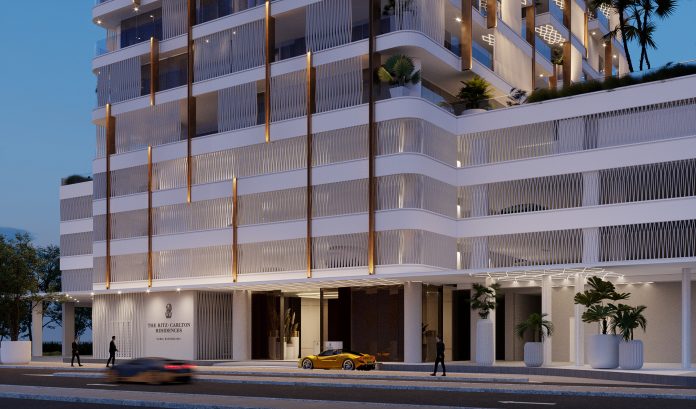
- The sector in the emirate is projected to grow more than 72% over the pipeline period until 2030
- In the region overall, the sector accounts for 209 schemes currently and is forecast to expand 83%
After its establishment in North America, the branded residences concept gradually gained a foothold in EMEA markets, where it has grown rapidly in the last two decades. Growing from seven schemes in the region in 2005, the sector now accounts for 209 schemes and is forecast to expand a further 83% by 2030, according to Savills latest research on global branded residences.
The locations across the EMEA region which showed the highest concentration of branded residences are widely varied — from established locations such as Dubai, London, and the Algarve, to emerging centres such as Cairo, coastal Montenegro, and Manama in Bahrain, branded residences are expanding their reach and entering new markets.
Dubai has the largest number of completed schemes and the most schemes in the pipeline for any market within the EMEA region, with projected growth of 72% over the pipeline period until 2030. A strong domestic and international supply of buyers searching for trophy assets which can serve as primary or secondary residences have boosted the growth of branded residential schemes in Dubai over the past decade.
Rico Picenoni, Director Global Residential Development at Savills, said “Our residential development consultancy team tracks the global branded residential space supporting developers and brands alike, and we have found no other market quite like Dubai. The emirate catapulted to the forefront of the branded residential sector in the decade following 2010. Over the forecast period, Dubai is expected to demonstrate growth that will make it roughly 30% more active than the second most active market globally, South Florida. This global city has demonstrated more than 16% compound annual growth over the last 20 years whilst the other, high-profile markets have each demonstrated no more than 5% compound annual growth, which is remarkable,”
London comes second in the rankings for completed and pipeline schemes in EMEA. It is followed by Cairo which has over 15 schemes currently, all of which are in the pipeline, and represent a relatively new sector for the Egypt market. Meanwhile, markets with fewer projects in their networks, such as Bahrain and Montenegro, exhibit impressive, triple-digit growth, though they are growing from a much lower base. Many emerging markets across the region are forecast to see increases in supply of 50% or more through the pipeline period.
Rico added, “Branded residences, as a segment of the EMEA residential property sector, are predicted to continue their extraordinary growth. Rising numbers of wealthy individuals globally will likely create a new source market of aspirational HNWIs looking for secondary or primary homes.
“Across the EMEA, the number of HNWIs has grown by 27% in the past five years, providing an expanding client base for branded residential schemes. In Dubai alone, the number of HNWIs grew 18% in the first six months of 2022, according to some estimates.”
Internationally mobile individuals, able to live and work from any location, will also continue to drive demand for branded residences. In recent Savills research which ranks 15 destinations for long-term remote workers, Dubai emerged among the top three cities for executive nomads. The locations were ranked on their performance in terms of internet speed, quality of life, climate, air connectivity, and prime rents.
Branded residences have historically been led by luxury hotel brands, and remain as such, though brands in other segments are increasingly capturing market share as the supply grows. Across the EMEA region, branded residences from the luxury and upper-upscale chains account for nearly 75% of the total stock through the pipeline period. These properties tend to be in urban or urban-resort locations, with 62% of the total schemes in such locations. However, all the hotel chain scales are continuing to expand their presence in the region.
There is also an increasing number of active brands in the non-hotel segment, from design and art brands to fashion and automotive brands. Increasing interest from non-hotel brands in the branded residences sector demonstrates the attractiveness of the model and that buyers are not limiting themselves to established hotel players.
When compared to non-branded stock in many markets, branded residences can command price premiums though these vary by location and market maturity. Across the EMEA region, the average brand premium stands at 36% compared to non-branded stock, and six percentage points above the global average of 30%. Emerging markets, however, can command a much higher premium than can be achieved in established markets or global cities.
Brands have recognised and are seizing all these opportunities and expanding their portfolios across the region, with supply of schemes projected to grow 60% by 2030.
Ricoconcluded, “The branded residences sector has long proven resilient and adaptable to adverse market conditions, offering security and reliable quality to buyers and attractive returns to developers and brands. With a strong and geographically-diverse pipeline across the region, as well as the continued commitment to the sector from developers and brands, branded residences as a property class is expected to maintain its impressive trajectory.”


































